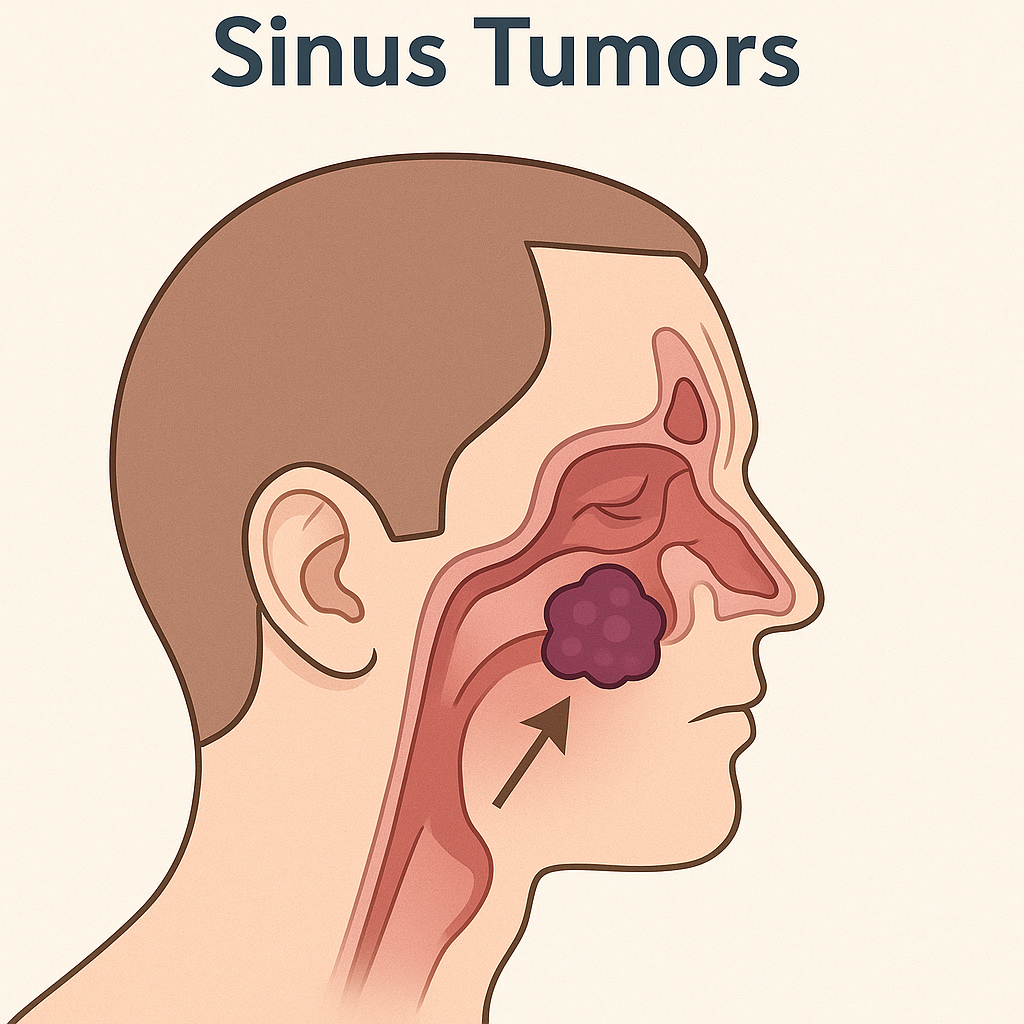Paranasal Sinus Tumors
Paranasal Sinus Tumors
Paranasal sinus tumors are rare but potentially aggressive growths that arise in the air-filled cavities surrounding the nasal cavity — known as the paranasal sinuses. These tumors can be benign (non-cancerous) or malignant (cancerous) and may originate from epithelial, glandular, or mesenchymal tissue.
Because the symptoms often mimic those of chronic sinusitis, early diagnosis is frequently delayed. Timely recognition and treatment are crucial to avoid complications such as orbital invasion or intracranial extension.
Paranasal Sinuses Anatomy
There are four paired paranasal sinuses:
Maxillary sinuses (located in the cheeks)
Ethmoid sinuses (between the eyes)
Frontal sinuses (in the forehead)
Sphenoid sinuses (deep behind the eyes)
These sinuses are connected to the nasal cavity and lined by respiratory mucosa.
Types of Tumors
Benign Tumors:
Osteoma
Inverted papilloma
Hemangioma
Fibrous dysplasia
Malignant Tumors:
Squamous cell carcinoma (most common)
Adenocarcinoma
Esthesioneuroblastoma (olfactory neuroblastoma)
Lymphoma
Mucosal melanoma
Sarcomas
Risk Factors
Chronic exposure to wood dust (especially linked to adenocarcinoma)
Industrial chemicals and heavy metals
Smoking
Human papillomavirus (HPV) infection
Chronic sinus inflammation
Signs and Symptoms
Early symptoms are nonspecific and may resemble common sinus issues:
Nasal obstruction or congestion
Facial pain or pressure
Recurrent nosebleeds (epistaxis)
Loss of smell (anosmia)
Swelling of the face or eyes
Vision changes
Facial numbness
Persistent sinus infections
As tumors grow, they may erode bone or invade the orbit, skull base, or cranial cavity.
Diagnosis
Nasal Endoscopy – visual inspection of the nasal cavity
Imaging Studies:
CT scan – to assess bone involvement
MRI – for soft tissue extension
Biopsy – to confirm histological diagnosis
PET scan – in case of suspected metastasis
Treatment
Treatment depends on the tumor type, location, and stage:
Surgery: Endoscopic or open resection for complete tumor removal
Radiotherapy: Often used in malignant tumors or residual disease
Chemotherapy: For advanced or metastatic cases, or specific histologies like lymphoma
Multimodal therapy: Combination of surgery, radiation, and chemotherapy in advanced cases
Prognosis
Benign tumors have an excellent prognosis if completely removed
Malignant tumors vary in outcome depending on stage and histological type. Early-stage squamous cell carcinoma has a better prognosis than late-stage disease
Inverted papillomas have a risk of malignant transformation and high recurrence if not completely excised
Prevention & Follow-Up
Minimize occupational exposure to carcinogens
Smoking cessation
Regular ENT follow-up, especially for patients with inverted papillomas or a history of sinus tumors

